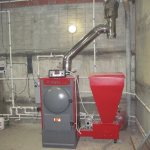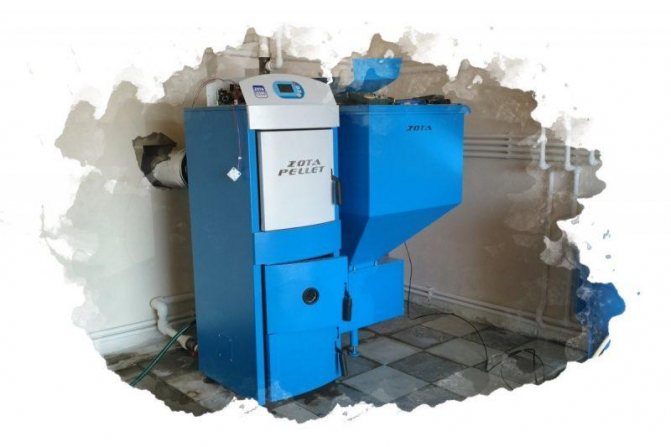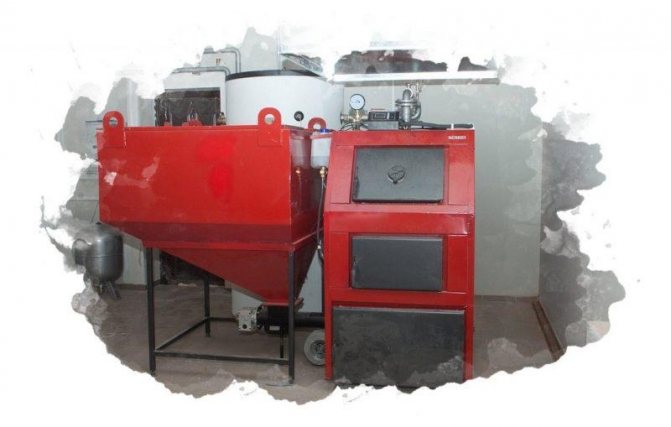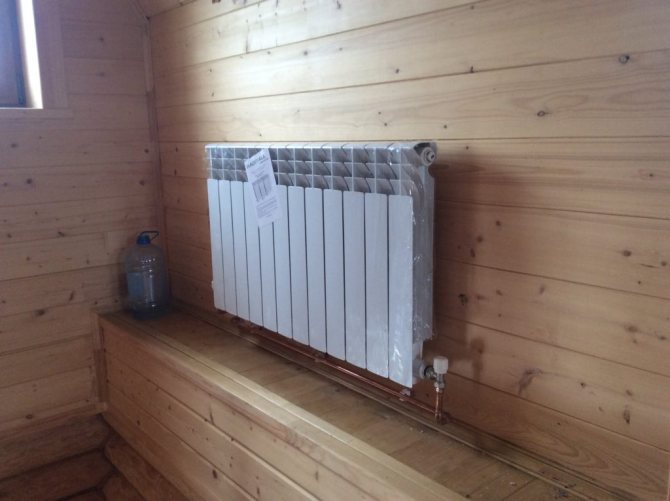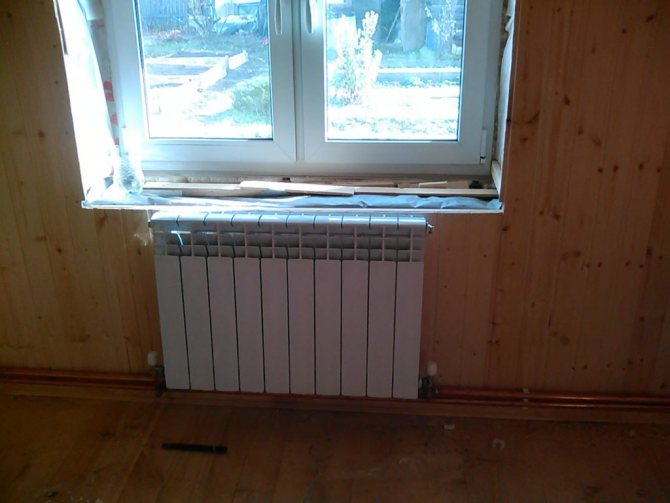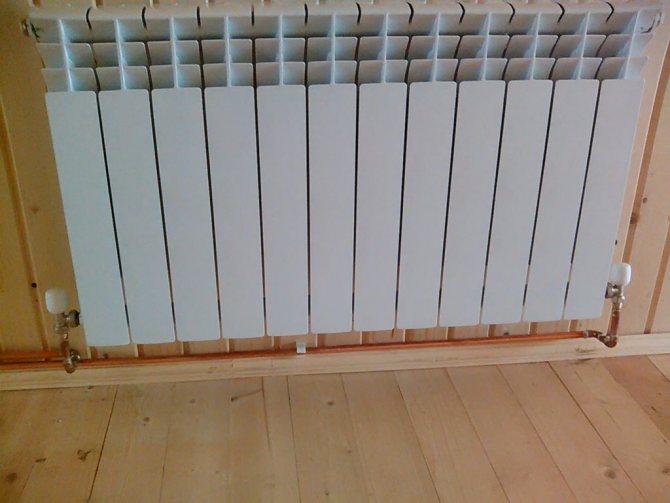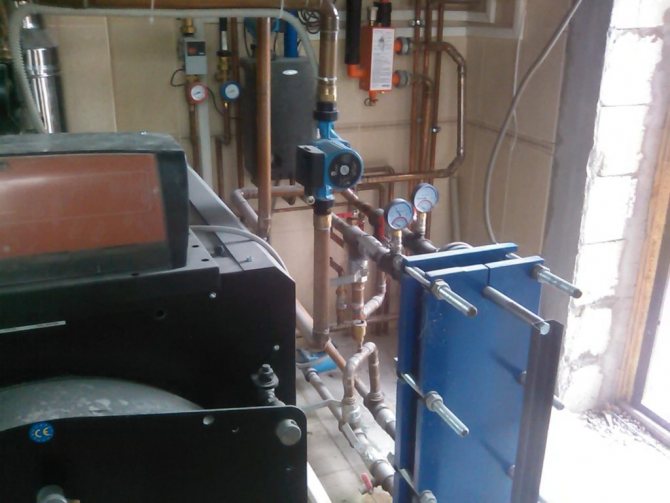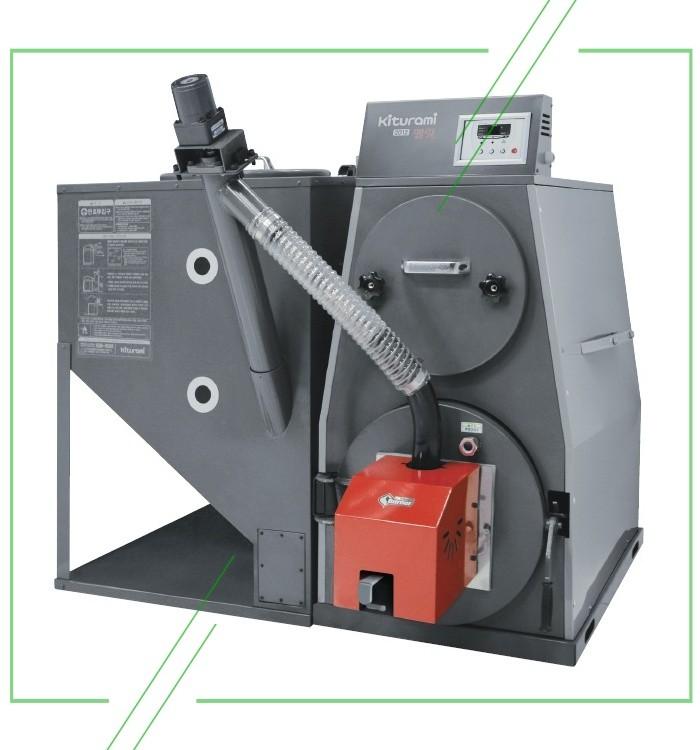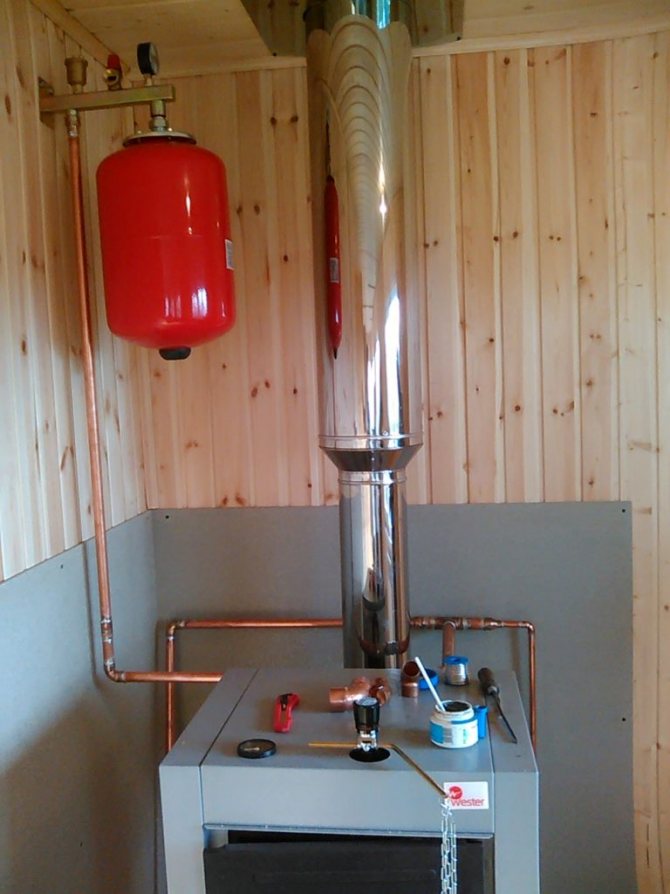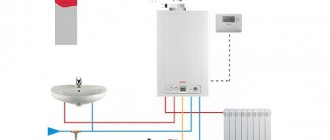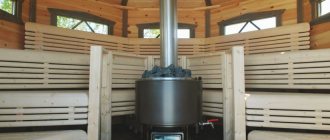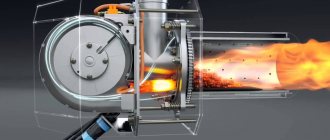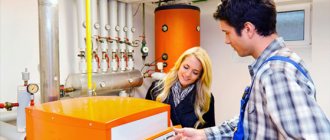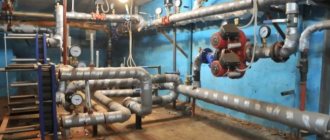Home / Solid fuel boilers
Back to
Published: 26.06.2019
Reading time: 5 min
0
847
Pellet boiler (PC) is a heat generator that is used to generate hot water for heating and hot water supply and uses solid fuel - pellets in granules.
They are made by pressing wood waste: shavings, sawdust, straw, sunflower husks and buckwheat with dimensions in diameter - 5-10 mm, and length - up to 7 cm... Calorific value of pellets - 4500 Kcal / kg, which is practically equal to the indicators of low-calorie coal and some wood yield.
Modern PCs differ from conventional coal or gas boilers and consist of four main units: a boiler with a pellet burner for combustion, a pellet storage bin, a fuel supply mechanism to the furnace and a storage tank.
The installation of a pellet boiler is carried out by a specialized installation organization. It is equipped with an automatic fuel loading system, which allows it to work autonomously for several weeks.
- 1 Technical conditions for the installation of a pellet boiler
- 2 Requirements for the boiler room
- 3 Installation space
- 4 Required tools and materials
- 5 Installation of the pellet boiler
- 6 Starting up the boiler for the first time
Technical conditions for the installation of a pellet boiler
In general, the rules for installing a PC are similar to those for solid fuel boilers. The complete package of requirements for the pellet boiler piping scheme is indicated by SNiP and the manufacturer's instructions.
Registration of the PC with the supervisory authorities is required if the total power exceeds 200 kW, and for a single boiler - 100 kW. Therefore, the owners of the adjoining plots can install such a boiler on their own. However, since all PCs are hazardous objects that, due to improper installation or operation, create preconditions for accidents or even an explosion, it is recommended to invite thermodynamic specialists at the stage of design work, equipment selection and installation.
To install a PC, you will need to have technical conditions that reflect the following requirements for the piping scheme for pellet heating boilers:
- PCs must comply with the design documentation and manufacturer's instructions.
- The design of the boiler elements must comply with the design and operational documentation.
- In the passport of the PC, the data must be indicated: heated volume, bunker volume, type of permissible fuel, efficiency, maximum temperature of flue gases and coolant, maximum pressure of the working medium, diameter of the chimney, diameters of supply and return pipelines, electrical power.
- Before installing the pellet aggregates, it must undergo factory hydraulic tests, as indicated in the passport. In general, the PC must meet the requirements of GOST 23660 and GOST 24444.
If all the conditions of the plant for transportation, installation and commissioning are met, the life of the PC must be at least 20 years with the operating hours of 200,000 hours.
About pellet burner
A pellet burner is a special heating device that generates heat by burning pellets or fuel pellets in a boiler. In some cases, these burners use unnecessary dry grain.
There are manual and automatic burners, in automatic burners the fuel is fed into the combustion hopper using a special screw, and the whole process is controlled by sensors, due to which the device needs minimal control by the user.Pellet burners have found their application not only in everyday life, but also in industry. They are used for space heating, water heating and a number of other needs.
Pellets, or fuel pellets, are a special solid fuel that is obtained from wood waste or agricultural waste by pressing and granulating under the influence of high temperatures.
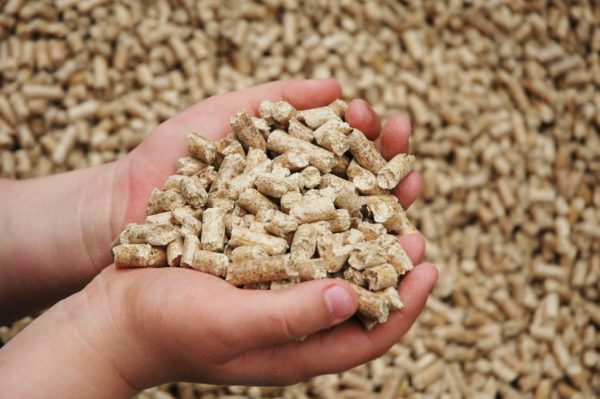
Pellets are an environmentally friendly type of fuel, since when they are burned, the same amount of carbon dioxide is emitted into the atmosphere as is formed during the natural decomposition of wood.
In countries in which agriculture and woodworking industry occupy leading positions, the cost of pellet fuel is much lower than that of coal. The only exceptions are those regions in the immediate vicinity of which coal mining enterprises are located.
When burning pellets, no hazardous vapors are emitted, as is the case with burning liquid fuels.
Requirements for the boiler room
The PC is mounted in a separate building or an annex to it. With a PC capacity of more than 30 kW, it is placed in a separate building - a furnace.
To organize its work, the owners of the boilers draw up regulatory documents in terms of operation and fire safety.
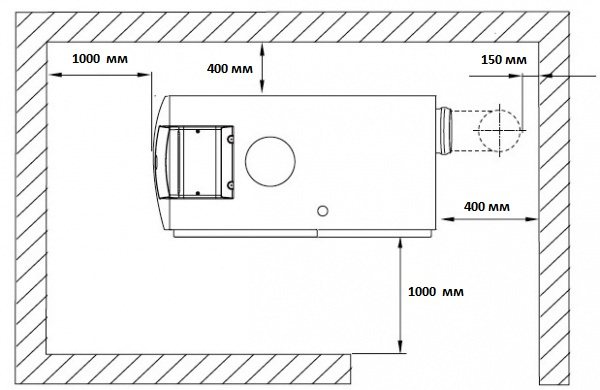

Dimensions to withstand
Basic requirements for placement:
- The floor for the installation must be made of non-combustible materials: concrete or sheet metal.
- The base for the PC should be made of reinforced concrete with a height of 10-20 cm.
- Emergency and operational passages must be provided, between the boiler and the walls of the building - a distance of at least 1 m.
- The room must be dry and heated, with an internal air temperature above + 10 C.
- Supply and exhaust ventilation in the building should be calculated based on the power of the PC, the data can be clarified from the technical and design documentation of the boiler house.
- If the boiler room is installed in a separate room, heating networks to the heating object are laid either underground, with laying below the freezing level of the soil, or by air. In both cases, the heating main must be well insulated from heat loss to the environment.
- The chimney height must be at least 5 m and protrude at least 0.5 m above the roof level; it is recommended to install a draft stabilizer or a conventional rotary damper.
- The chimney diameter is calculated according to the boiler output. For pellet boilers, it must be at least 150 mm.
- The installation of a condensate trap is compulsory.
- The roof is treated with a master flush, the lumen is filled with non-combustible mineral wool.
Place for installation
The boiler room must comply with fire safety requirements. The PC should stand on a non-combustible podium located above the floor surface so that dangerous situations do not arise during operation or repair:
- ignition of fuel;
- getting burned while servicing a PC;
- carbon monoxide poisoning with low draft and inoperative ventilation.
To increase the reliability of the equipment operation, a safety automation is installed on the boiler, complete with temperature and pressure sensors. For the effective operation of the system as a whole, a storage tank is placed during the installation of the PC. Therefore, it will require additional space at the rate of 50.0 l per 1 kW of boiler power. Optimizing the thermal circuit by using the tank results in a 30% fuel savings and protects the PC from overheating.
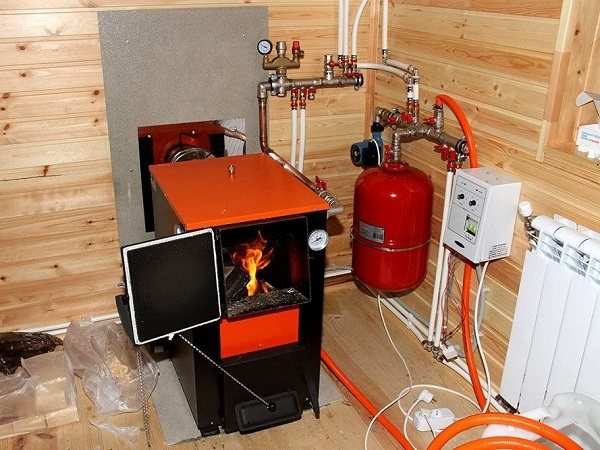

Photo: picspedia.ru
The total weight of the equipment according to this scheme has a large value, which must be taken into account when calculating the load on the boiler room floor.
In addition, the area under the unit must be well insulated, otherwise condensation will constantly occur under the unit.
Advantages and disadvantages
The equipment has a number of advantages:
- Pellets are a safe fuel compared to gas and electricity;
- It allows you to significantly reduce the cost of heating the premises in comparison with the use of electric boilers. At the same time, pellet installations are more expensive than gas equipment, but do not forget that it is not always possible to supply gas and purchase gas cylinders;
- Self-made installations guarantee high efficiency - 95%. Some in-store installations have over 97%;
- They are used not only for heating the room, but also for obtaining hot water;
- There are no rules for transporting and storing fuel. Being near a person, pellets do not cause allergic reactions, and there are no toxic fumes during combustion;
- Fuel is available for purchase. Equipment owners complained about the lack of fuel and the need to prepare a supply of pellets from the winter when devices appeared, now there is no need to store a large volume of pellets at home, you can buy them everywhere if necessary;
- The price for pellets is on average at the same level, in contrast to gas and electricity, the tariffs for which periodically experience seasonal fluctuations;
- Installation of the device does not require special skills, and there is no need to coordinate the installation with the authorized bodies;
- After the combustion of pellets, natural mineral ash is formed, which does not require special rules for disposal.
Along with the advantages of similar equipment, a number of disadvantages are also distinguished:
- The high cost of finished store equipment. Despite the popularization of devices in recent years and a slight decrease in prices, pellet boilers are still more expensive than gas or electric equipment of similar power;
- The equipment needs constant maintenance (especially outdated models). The user will have to clean the ash pan and heat exchanger from the accumulated ash once a week. In modern models, cleaning is provided at an automatic level;
- In the absence of automatic fuel supply, the user has to load pellets into the hopper in manual mode;
- It is necessary to ensure the conditions of minimum humidity in the rooms in which the pellets will be stored pending use;
- Imported equipment is practically not designed for the conditions of the harsh domestic winter, as a result of which breakdowns and malfunctions often occur;
- In remote areas, fuel for the winter still has to be stored due to the instability of supplies.
Required tools and materials
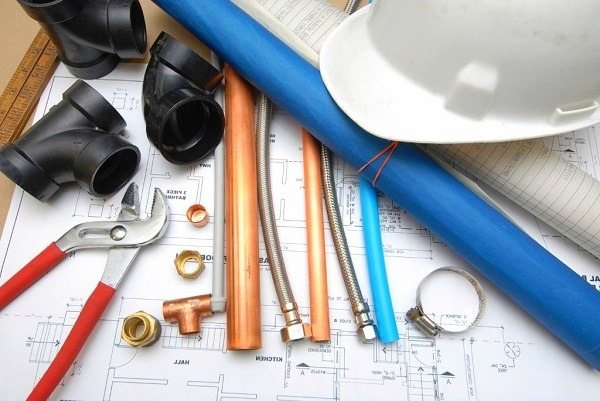

Photo: kievskaya.all.biz
Before carrying out construction and installation work, the following materials and equipment are purchased:
- Pump for circulation of the coolant in the circuit.
- Air valves for removing the air mixture from the expansion tank in schemes with natural circulation of the coolant.
- Collector for distributing the coolant through the heating circuits.
- Sump for removing debris from the network water.
- Heating radiators
- Indirect heating boiler.
- Polypropylene pipes for an apartment heating system.
- Metal pipes for connecting the boiler.
- Safety valve to protect the PC from sudden pressure surges.
- Shut-off and control valves.
- Safety automation on the PC is built-in and consists of the following elements: pressure gauge, sensors, signaling device, boiler control panel.
- Set of tools.
Pellet boiler installation
High demands are placed on the installation of PCs. This is due to the fact that according to the technology, the moisture content of the fuel should be minimal, then the coolant is heated to high operating temperatures.
Incorrect installation will lead to a violation of the operating conditions of the boiler and its auxiliary elements, which will create an emergency situation and equipment failure.
In accordance with fire safety requirements, piping of heat and power equipment is carried out only with metal pipelines. Polypropylene structures cannot be used, since the temperature of hot water leaving the PC exceeds the operating tolerances of polymers.
To ensure the reliability of the boiler room, it is recommended to connect two different phases as power supply. One for the functioning of the PC and auxiliary equipment, and the other for the needs of lighting.
This greatly simplifies the repair work of the main units, so as not to do them in the dark. In addition, independent illumination of the boiler front will help to perform routine maintenance work efficiently.
After checking the equipment according to the design specifications, they proceed to direct installation.
Installation algorithm:
- PC installation, connection of the gas-air duct with the chimney.
- Installation of a pellet hopper.
- Fuel auger connection.
- Assembling and configuring the PC control panel: pressure gauge, safety valve and air vent.
- Piping with pressure gauges and thermometers of the circulation pump.
- Installation of automatic equipment for controlling heating of the return heat carrier.
- Placement of backup power supply and voltage stabilizer.
Before starting up, commissioning works are performed:
- verification of the compliance of the assembled boiler house circuit with the project;
- checking the tightness of the gas path;
- pressure testing of PC and heating system;
- checking the operability of safety automation;
- control start-up, measurement of operating parameters and performance of a set of commissioning works.
After the completion of the installation and construction work, adjustments are carried out otherwise the equipment will operate with low efficiency, cost overruns in fuel and electricity.
Complete set of heat supply system
In addition to the main boiler unit, you need to buy all consumables for installation. You can order them in our ISM GROUP store at the best price in Moscow. All components are provided with a quality guarantee confirming the originality of the manufacture of pipes, fittings and other fasteners and the assembly of units in units, for example, pumping equipment. Ordering from us turnkey installation of a pellet boiler, you receive a guarantee not only for all components of the system, but also for the entire range of work performed.
Boiler switching on for the first time
- Fill the pellet hopper.
- Check the water pressure in the heating network and, if necessary, recharge to the standard value.
- I open the smoke flap.
- The burner is ignited - through the operating panel of the boiler or manually.
- Check the compliance of the operating parameters with the design parameters.
- A complete stop of the PC is performed after all the fuel has burned out. The process is monitored through a viewing window.
- In order to prevent the formation of condensation, the temperature of the inlet heat carrier of the water heater is monitored. It should not be cold, otherwise this will lead to abundant formation of condensate, an increase in soot in the gas path, both on the walls of the heat exchanger and in the chimney, which sharply reduces the efficiency of the installation.
Common mistakes in piping a pellet heating boiler:
- There is no control over the temperature of the return water entering the boiler.
- Poor sealing of the gas path, leakage of pyrolysis gas and a drop in efficiency.
- There is no thermal insulation of the base under the boiler, as a result of condensation with the release of harmful substances.
- The inconsistency of the dimensions of the premises with the fire safety requirements leads to the impossibility of servicing the auger with pellets and the bunker.
Pellet boilers are efficient and easy to operate, as they have the possibility of long-term autonomous operation. The cost of heat energy of such an installation is not high, and it is much more convenient to use it than other heating equipment in a wooden house. However, all this will depend on how correctly the choice of equipment is made, its installation and commissioning.
Making a pellet burner
Pellet installations are often ignored by buyers due to their high cost compared to gas and electrical equipment, while the problem is solved by making the device at home.
General scheme for self-production of a pellet burner
The combustion chamber can be equipped with a square or round pipe. Give preference to better heat-resistant steel that can withstand elevated temperatures, the wall thickness should be at least 4 mm.
The self-made installation is fastened to the boiler with a flange plate made of heat-resistant steel with a thickness of 3 mm or more.
A container for supplying fuel to the combustion chamber can be purchased or made by hand. The best option is to immediately make an installation in which fuel will be supplied automatically. To do this, we place the auger in the purchased pipe of the required diameter. The rotation of the device will be carried out at the expense of a bearing, a gearbox and a motor operating at low speeds.
Additionally, a fan is purchased in the store, which will blow air. The fan is fixed on a plate, which is made depending on the size and design of the door of the boiler used in your home.
It is also important to worry about adjusting the amount of incoming fuel and the volume of air blown by the fan, otherwise the homemade device will be unstable. In home devices, the air supply force and the amount of pellets are adjusted manually
This method is inconvenient due to the fact that it requires constant supervision of the burner.
For automation, an electric filament element and a photosensor are purchased. The first device ignites the flame in the event that the pellets are extinguished, and also regulates the inclusion of the device. A photo sensor monitors the appearance of a flame: if the flame is stable, the sensor sends a signal to the glow plug to stop ignition.
A fill sensor is also purchased to automate the system. It will notify the electronic filling of the device about the degree of filling the combustion chamber with pellets.
Pellet burners are modern equipment for boilers that can improve the environmental friendliness of the process and reduce fuel costs. At the same time, the equipment itself in the store has a high cost. For basic household needs, it is better to give preference to home-made devices, the work of which can be automated if necessary.
Minimizing housing maintenance costs is one of the most important tasks today. The search for ways to optimize costs is ongoing. Heating a house, with regularly increasing tariffs, is an essential item in the family budget.
There are several ways to reduce it. With the help of energy-saving technologies when building a house and using efficient heating systems. A pellet boiler is more economically profitable than analogs working on gas, not to mention electricity and other energy sources. The reason lies in the low cost of consumable raw materials and high energy efficiency of the device.
